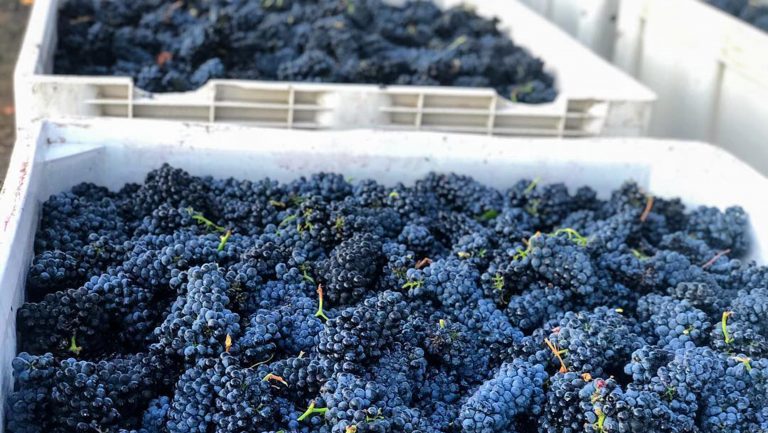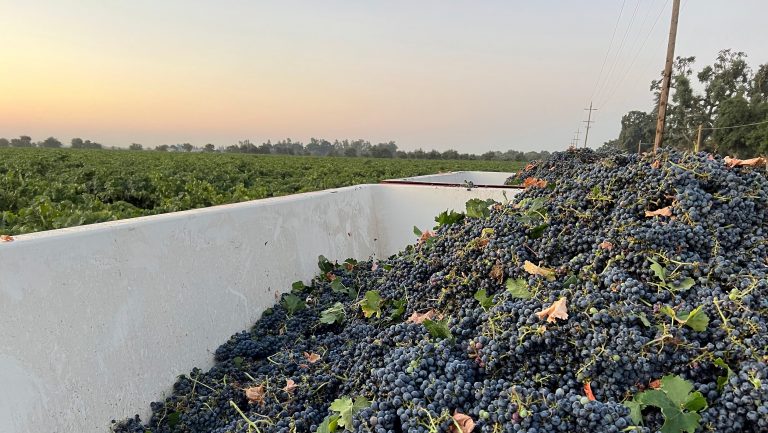For years, many Texas winemakers felt they couldn’t meet consumer demand without occasionally sourcing fruit from out of state. This always resonated as inaccurate to Chris Brundrett, the owner of William Chris Wine Co. and a board member for the wine industry advocacy group WineAmerica. “I can show you the vineyards and we can do the math,” says Brundrett. “We have more acreage than the [2017] NASS [National Agricultural Statistics Service] survey shows.”
Brundrett learned firsthand the importance of having accurate wine industry data. Due to uncertainties in supply, he struggled to get Texas winemakers behind a new, quality-minded labeling law that would require winemakers to source grapes from within the state. After six years of working towards an agreement, the law finally passed in 2021.
The NASS, which falls within the United States Department of Agriculture, has “in the past completed vineyard surveys to see what grapes are in the ground, how much per state, and the percentages of hybrid grapes versus vinifera,” says Michael Kaiser, the vice president of WineAmerica. However, the report has been pared down in recent years to “basically just reflect tonnage dollars,” says Melissa Hansen, the research director for the Washington Wine Commission. In 2017, NASS vineyard surveys were left out of the 2018 Farm Bill altogether.

Don’t miss the latest drinks industry news and insights. Sign up for our award-winning newsletters and get insider intel, resources, and trends delivered to your inbox every week.
Some states still commission or pay NASS for reports, or work with NASS regional offices to compile their grape crush reports, like California. Other states, however, are taking a different approach. “Since the [NASS] report doesn’t offer the detail we need, we are currently beefing up our in-state grape report to collect that information,” says Hansen.
WineAmerica’s 2022 Economic Impact Study predicted the U.S. wine industry would have a $276 billion impact on the economy that year, and Texas ranked second in statewide impact, after California. “But without accurate data, the study lacked the right numbers,” says Kaiser. WineAmerica encouraged Brundrett and other industry leaders to rally state representatives to support surveys at the federal level, and to pursue in-state grape reporting, if it did not already exist.
Kaiser says that states with a state-funded wine board or wine commission to oversee such reports tend to have the most abundant and timely data—or they have the infrastructure to advocate for it. In 2021, Sam Filler, the executive director of the New York Wine & Grape Foundation, encouraged growers to participate in a new survey, writing that current data is needed for “business decisions, research priorities, marketing messaging, and for tracking economic impact.” In California and Washington, growers and winemakers pay an assessment fee per ton of grapes or per gallon sold, respectively, funding production of a state grape report.
WineAmerica is spearheading an effort to restore funding for NASS vineyard surveys in the 2024 Farm Bill. In the meantime, states like Texas are tapping into state and industry resources to get the data they need to continue to grow. This past March, the viticulture and enology team at Texas A&M’s AgriLife Extension sent its second vineyard survey and crush report to winemakers and grape growers, in the hopes of capturing more accurate numbers. Survey questions were created in collaboration with a committee built from Texas’ industry organizations, including, among several others, Texas Wine & Grape Growers Association, Texas Wine Growers, and Texas Hill Country Wineries.
As many state programs do, AgriLife Extension is allocating resources to collect data over the phone, in the hopes of boosting participation. Professor and viticulture specialist Justin Scheiner, Ph.D, is hopeful the report’s value will be self-evident to growers and winemakers as it’s produced more routinely. Texas’ nascent effort to establish consistent reporting of what varieties are planted, in what quantity, and where, presents an opportunity to consider why such reports are not only essential for knowing what’s in the ground, but also for their transformational impact on the economic growth of a wine region, whether it’s emerging or established.

How Growers and Wineries Leverage Grape Reports
The 1976 Claire Berryhill Act mandates California grape growers and wineries submit annual reports detailing varieties purchased and the district they were purchased from. The California Department of Food and Agriculture produces the state’s grape crush report, in collaboration with the NASS Pacific Regional Office, says Natalie Collins, the president of the California Association of Winegrape Growers. Collins says the data “correlates what’s in the ground, what’s been grown in the past, and what’s selling. It’s a game of supply and demand, and the data backs up smart business decisions.”
“Even if new growers slip through the cracks and some bigger players manipulate the data a bit, the report offers an immense amount of useful information,” adds Stuart Spencer, the executive director of the Lodi Winegrape Commission. According to Spencer, growers refer to the report to determine where their prices are relative to others, track down varieties easily, and gauge if there is too much of one variety planted. Spencer also suggests that the wine industry relies on state funding for research institutions like the University of California extension programs that work on issues like smoke-affected vineyards, and reports demonstrate industry strength.
When Allison Van Arnam planted vines at VanArnam Vineyards in Washington’s Yakima Valley in 2009, she relied on state grape reports to compare annual data statewide when deciding what to plant. Like others, she synthesizes the state’s report with perspective from the Washington Winegrowers Association community, as well as fellow growers and wineries.
“It’s very useful legislatively to show our impact. It offers an understanding of how big our industry is and how much agriculture we affect.” – Skip Causey, Virginia Vineyards Association
At Dineen Vineyards in the Yakima Valley, co-owner Marissa Dineen says grape reports support strategic thinking for distinguishing one’s wines—like those made from Cabernet Sauvignon, which is prevalent locally—in a premium market. “From our location, we get more of a diurnal shift,” says Dineen. “While others get their balance from tannins, we get ours from acidity—so we intersect terroir with the grape report.”
The Breadth of Economic Impact
“It’s very useful legislatively to show our impact,” says Skip Causey, the president of the Virginia Vineyards Association. “It offers an understanding of how big our industry is and how much agriculture we affect.”
“It’s a political dance all the time of trying to get more funding as budgets go up and down,” adds Spencer. “Crush reports offer data points that provide leverage to demonstrate the size and scope of an industry when you are advocating at the state or federal level.”
In rural counties, where vineyards are often located, tourism dollars and taxes from wine sold support local economies. A good example of this is Fredericksburg, Texas. Local officials communicate the number of wineries and vineyard acres to the state government, which demonstrates “true statewide economic impact while making the connection that wine is agriculture,” says Dr. Scheiner.
Kerry Shiels, the winemaker at Côte Bonneville Winery in Yakima Valley, says that economic impact is about more than grapes and wine. “The wine industry is revitalizing,” she says. “People move home because there’s more to do. Wineries bring musicians and painting classes. People stay in hotels, eat in restaurants, and shop in local stores. All those things add economic value.”
Shiels also suggests that reports offering a spread in pricing give farmers a tool to advocate for a fair price for premium grapes, and not settle for what they can get on the market. “If you’re growing a world-class crop, it’s important to get paid for it,” she says. “When we don’t, that’s when you can’t find local produce anymore.”
Spencer describes one challenge in Lodi as the dominance of large grape buyers. “We’re trying to diversify our winery base here to see a broader spread of price points,” he explains. “That indicates we’ve got producers willing to pay a higher price for quality winegrowing. If everybody’s paying the same price, there’s less incentive.”

Practical Applications of Planting and Crush Data
For grape growers and winemakers, reports clarify misconceptions and illuminate industry trends. “In Virginia, people plant hybrids to try to get more tonnage,” says Causey. “Hybrids and vinifera are both coming in at 2.5 tons per acre though. Vinifera is on average about $2,600 a ton, hybrids average $1,600. To find [out] the tonnage per acre is about the same kind of pops the bubble on moving towards hybrids.”
Shiels similarly suggests the report can reflect the maturation of a wine region. “Are acres coming out because a grape fell out of style, or because they were planted in the wrong spot, and we’re getting smarter?” asks Shiels. “It’s easy to say more acres equals growth—but sometimes fewer or different acres equals better quality.”
“Two years ago, we found out Cabernet Franc bypassed Chardonnay, and Merlot, Petit Verdot, and Petit Manseng are getting ready to pass Chardonnay,” says Causey, as an example of this data at work. “So more investment is going to the grapes that are growing well in Virginia.”
In the greater southeastern U.S., industry growth depends on determining which Pierce’s Disease-tolerant varieties best resist other common fungal diseases, as well as which popular varieties are prone to winter injury or have flaws that can be pinpointed sooner. “Having a point of comparison over time ultimately supports sustainable production,” says Scheiner.
“You have to have courage to look at where your gaps are and understand the market,” says Brundrett. “The data allows us to propose to a legislator, ‘if you put $2 million in this program, we can market Texas-grown wines—rather than wines that are not produced here—research climate challenges, and support a sustainable agrotourism region.’”

Dispatch
Sign up for our award-winning newsletter
Don’t miss the latest drinks industry news and insights—delivered to your inbox every week.
Amy Beth Wright is a creative nonfiction writer and journalist covering wine, food, and travel. She contributes to Wine Enthusiast, Fodors, and The Alcohol Professor, among other outlets. Keep in touch on Instagram @amyb1021 and Twitter @AmyBethWright. Visit amybethwrites.com to read more of her work.






